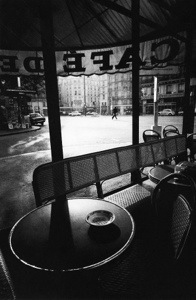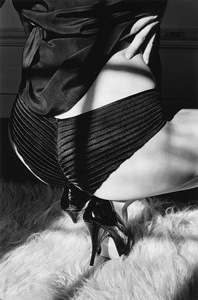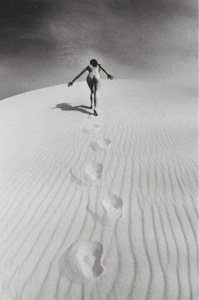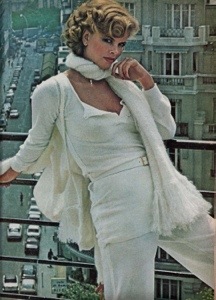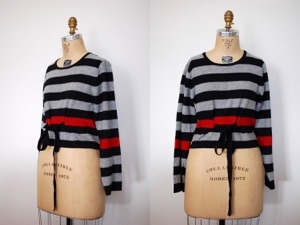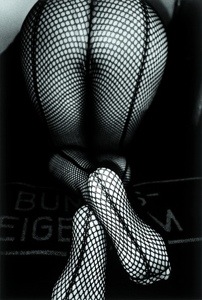It's fashion!
Author Archives: Ella Burls
Calvin Klein Provocations
Video
Vena Cava — “Fashion Film”
This new video is a spot-on parody of the fashion videos I love so much, but it’s also a great way to show off the really cute clothes in Vena Cava’s new line.
Jeanloup Sieff
Ella used to frequent a seedy and unsavory online community where many debased degenerates used to gather to revel in their shameless depravity. (Can you tell that I miss them?)
When the other libertines noticed that Ella appreciated black and white photography, they began sharing samples of the work of their favorite photographers. One of the least savory characters, claiming to be a social worker in Moscow with a mysterious connection to the city of Wuppertal, introduced me to the sensational work of Jeanloup Sieff by posting the following three photos, without comment or caption.
These three images were so electrifying to me that I began keeping a list of my favorite photographers as a result. I did not want to forget the name Jeanloup Sieff.
Born in Paris in 1933, Sieff was a famous fashion photographer in the 60s.
He also took some memorable portraits in the era:
Sieff is arguably best known for his black and white nudes, of which I will only post one of my favorites.
His landscapes were similarly superb.
And, as may be noted in the Hitchcock portraits as well as much of his other work, he had a sense of humor.
Thank you, erstwhile Moscow ne’er-do-well for introducing me to the work of this great photographer.
More of Jeanloup Sieff’s work may be seen here.
Who the hell is Sonia Rykiel?
The 1995 duet “Who the Hell is Sonia Rykiel” with the legendary, late, Malcolm McLaren, is a nice soundtrack for this post.
Born in 1930 in Paris, Sonia was a window dresser as a teen and later married the owner of a dress boutique. When she could not find soft, comfortable sweaters to wear during her second pregnancy, she collaborated with one of her husband’s suppliers to create soft, form-fitting sweaters for herself. They were popular enough that she began selling them in her husband’s boutique. By 1967 her ‘Poor Boy’ sweater was world famous and she was named by the American press, ‘The Queen of Knits’.
High, tight armholes and narrow shoulders are classic Poor Boy sweater features. Horizontal stripes have been, and continue to be, a hallmark of Rykiel’s work.
Her 2010 collection for H&M was a fun revival of the looks which had made her famous, decades before.
But, besides the Poor Boy and the horizontal stripe, Rykiel is best known for her graphic work with knits. It was she who first put seams on the outside of garments, and she who first used words and pictures as part of the knits she designed, an early example of which was a sweater bearing the word ‘SENSUOUS’, released in 1971 to much hullabaloo.
An informative timeline of her life and career may be found here.
A wonderful interview with Rykiel may be found here.

^Looks from the 40th Anniversary of her label celebration and show in 2008.

^A look from the Spring, 2011 collection, so that I can tag this post with the word ‘nipples’.
Lena Dunham
This article in The Independent is an enjoyable read on the subject of nudity and body image issues, examining the influence of Lena Dunham’s naked body on our psyches.
You can read more of The author’s work here.
Daido Moriyama
‘Public Garden’ – Chanel
Red Valentino
Valentino’s Maria Grazia Chiuri and Pier Paolo Piccioli outdid themselves in my opinion.
This is what Spring looks like!
The entire collection may be viewed here.
Rudi Gernreich
Rudi Gernreich, arguably most famous for the topless swimsuits he launched in the 60s, was a driving force in the sartorial revolution of the 60s in the U.S.

^Here, Peggy Moffitt models his first topless swimsuit design. It is 1964.

Noted for his penchant for androgyny, his swimwear was as unisex as nature would allow.

^The Monokini for which he is still known, 50 years later.^
I have read that Gernreich's topless suits launched the topless beach craze, though I have also read that the swimwear was not a commercial home run. Not so, his famous 'No Bra', which was a best seller from Day One.
It seems so mundane nowadays; a sheer bra with no wire or padding. At the time, it was nothing short of revolutionary. Bras before this were made to change the shape of a woman's breasts; not celebrate their natural shape.
But Gernreich also designed more than swimwear and underwear.

^Here, Peggy Moffitt models a Gernreich look in 1971.
More of Gernreich's creative work:

^With his model and muse, Peggy Moffitt.
A quasi-famous video of Peggy Moffitt sporting Gernreich looks, filmed by Moffitt's husband, longtime collaborator of Gernreich's, photographer William Claxton, called 'Basic Black' is said to be the first fashion video.


